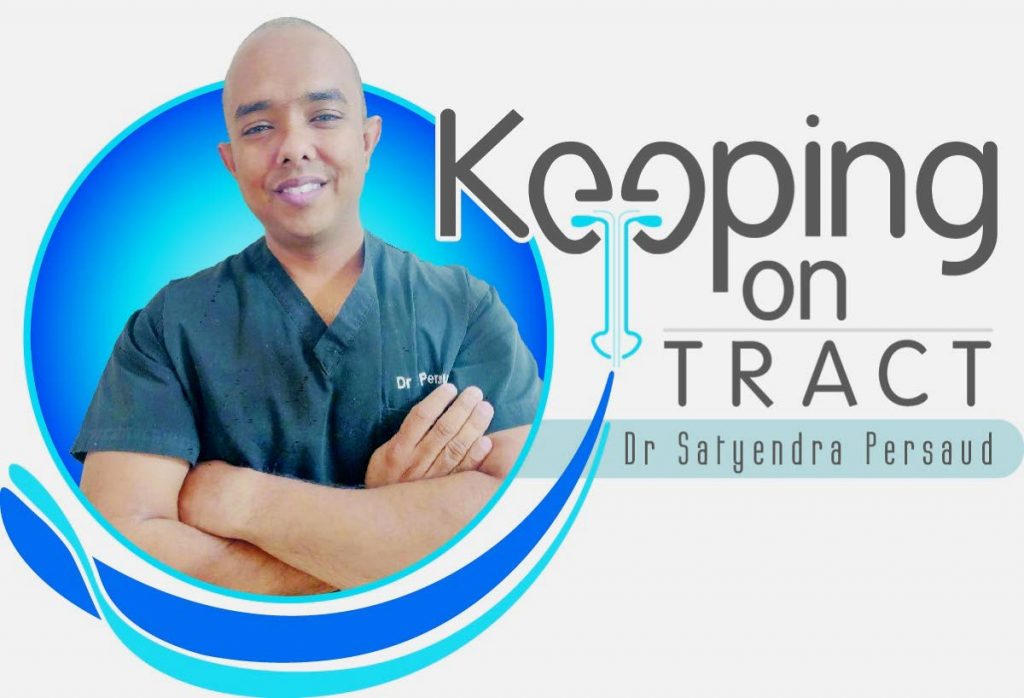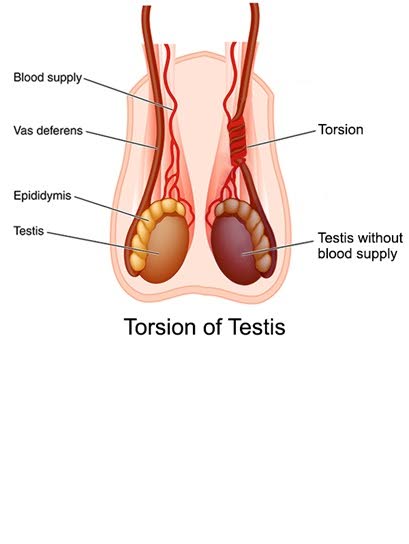Testicular torsion

DR SATYENDRA PERSAUD
SEVERAL times, I have seen young men with testicular pain present late to hospital and have lost their testicle. This late presentation is usually due to failure of the patient to seek help or failure of medical personnel to identify the issue early enough. I urge parents to pay attention and seek help for testicular pain as soon as possible. I hope this review helps by way of education.
What is testicular torsion?
The testicle gets blood supply through a cord that comes out of the body. Normally each testicle is well anchored in its sac. Some men are born with a deformity in which there is no tissue holding the testicles down in the sac and they move freely. In testicular torsion, the testicles are not properly attached and spin freely about this cord like a cherry twisting on its stem. Twisting in this way cuts off the blood supply to the testicle and could cause the testicle to die if the blood supply is not restored in time. Most times, this happens on one side but in rare instances, may happen on both sides.
What are the symptoms of testicular torsion?
While testicular torsion may occur in babies and old men, the vast majority occur in adolescent males. The predominant symptom is sudden onset severe testicular pain. Some may have had a similar pain which came on intermittently and went way on its own as the testicle may twist intermittently. The testicle is red, swollen and extremely tender to touch. It may feel higher than normal and lie in an abnormal position.
How is testicular torsion treated?
The urologist takes a detailed history and physical examination, looking for other conditions which would mimic testicular torsion such as an infection. If torsion is suspected, an operation is necessary right away as time is of the essence. The critical threshold for saving the testicle is around six hours from the start of symptoms and after this time has passed, there is a greater risk of losing that testicle. If the doctor suspects torsion, or it is high on the list of possibilities, it is safer to take the patient to theatre, open and have a look than to wait. An ultrasound is not necessary if torsion is suspected and waiting on an ultrasound may cause dangerous delays. Torsion is a true emergency. Sometimes, an ultrasound may be warranted if torsion is low on the list of possibilities.

What happens at the time of operation?
With the patient asleep, the urologist makes an incision in the scrotal sac to look at the testicle. If it is twisted, he untwists it and wraps it in a warm cloth to give it a chance to recover. If the testicle recovers and looks healthy, he will then stitch it in place so that it cannot move again in the future. He will also need to stitch the other side in place as well even though it has not twisted. This is done as a precaution because the defect we spoke about earlier happens on both sides and there is a risk that that side may twist in the future.
If the testicle looks like it has died, the urologist will have no choice but to remove it. Sometimes, at the time of surgery, the cause of the pain is not torsion, but something else and the urologist will decide on what needs to be done, if anything at all.
What happens after surgery?
Usually recovery is uneventful and straightforward and the young man leaves hospital the day after surgery. There is a small risk of bleeding or infection and if this happens, he should return to the urologist. Pain medication may be necessary for a few days. A single testicle can make enough sperm and testosterone but fertility issues may arise in some men in the future as can low testosterone. Having one testicle means even greater care should be taken with the remaining one especially with contact sports. Some men may want to consider having a testicular prosthesis placed and this should be discussed with the urologist.
Dr Satyendra
Persaud DM (Urol) FCCS FRCS (Eng) is a consultant urologist at San Fernando General Hospital. He is a lecturer in urology at University of the West Indies (UWI) and is responsible for co-ordinating urology training at UWI.

Comments
"Testicular torsion"